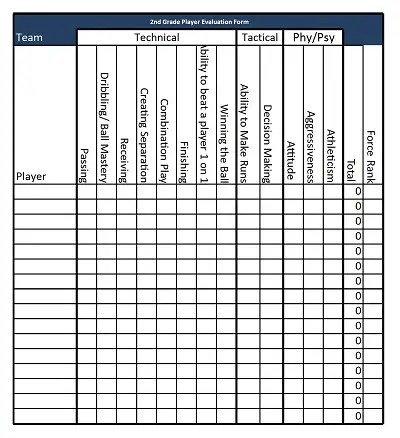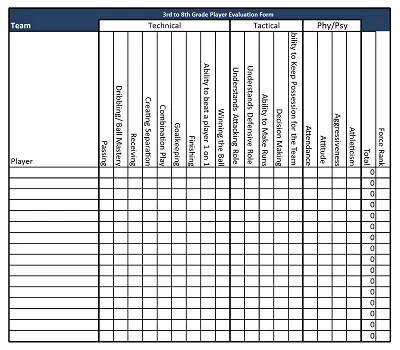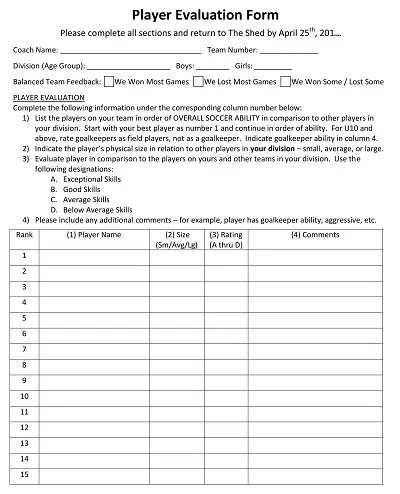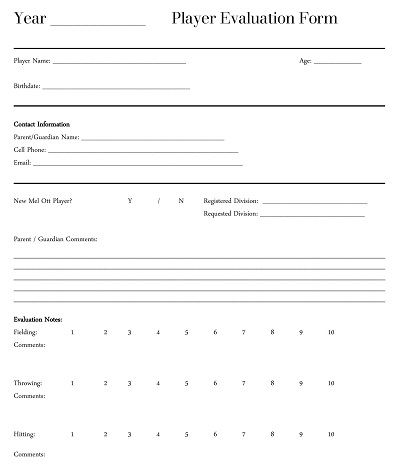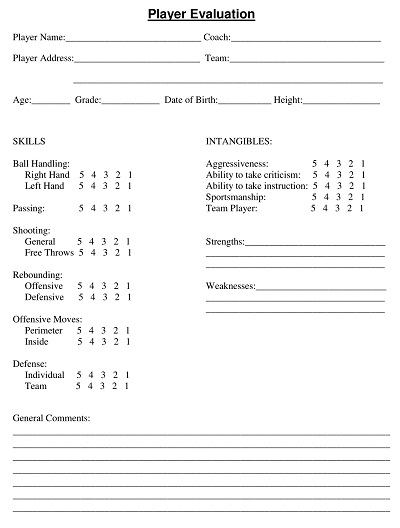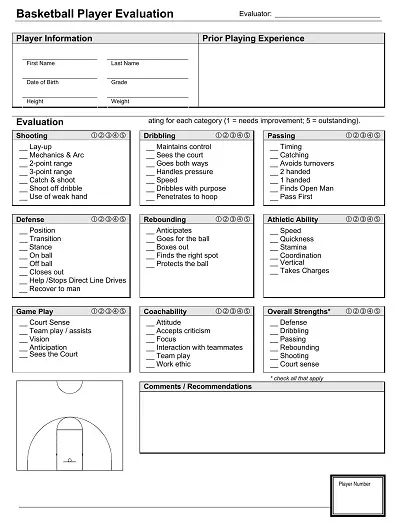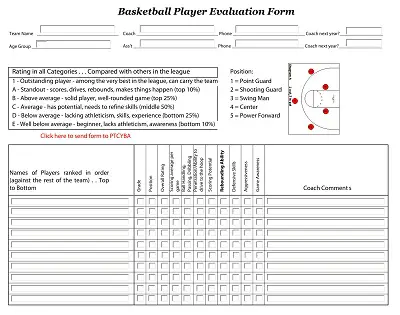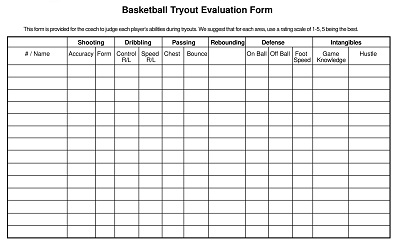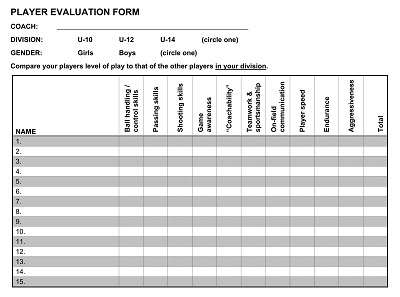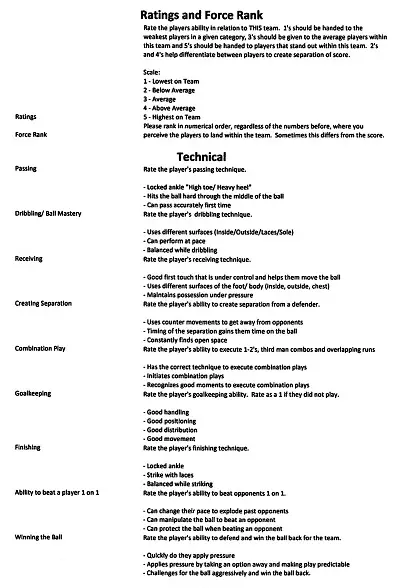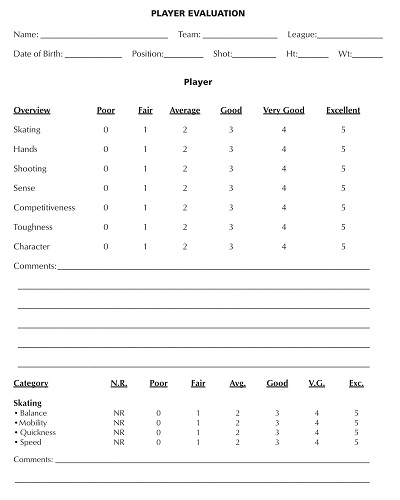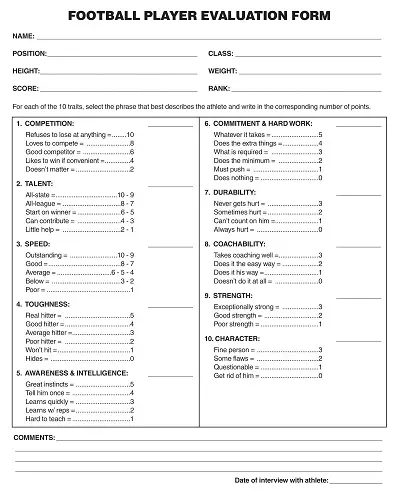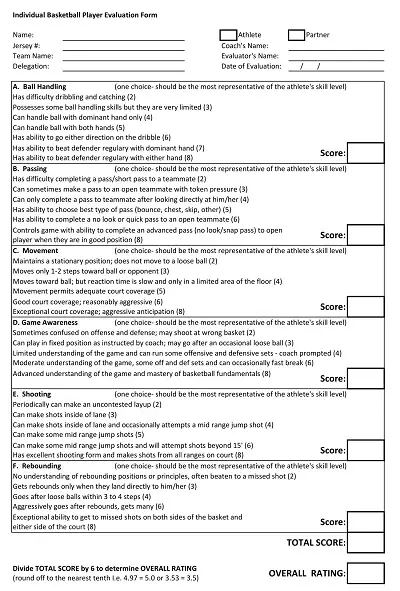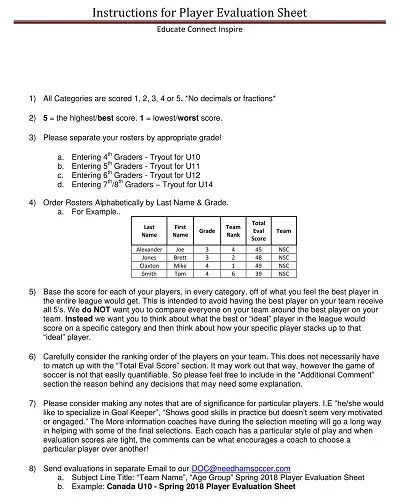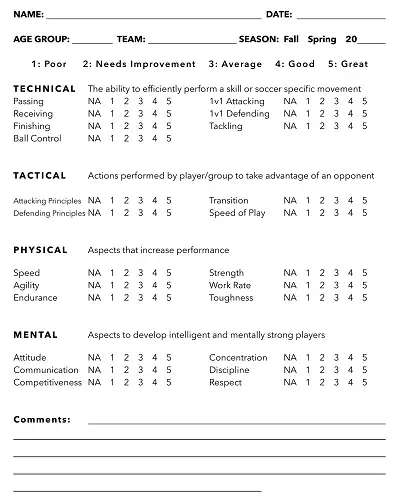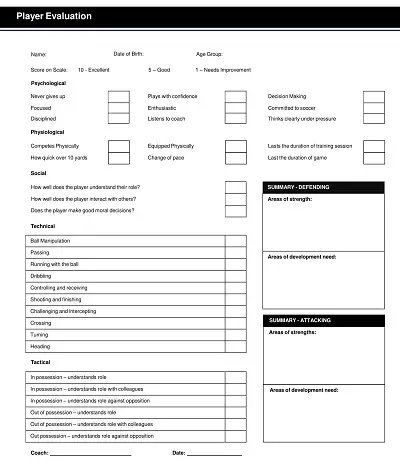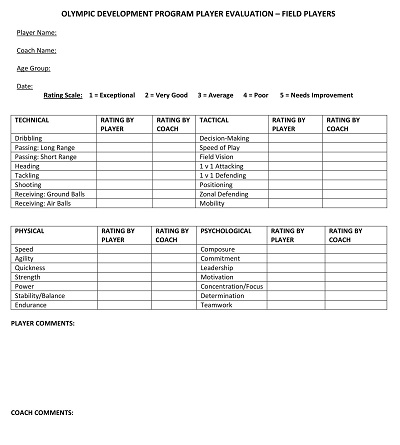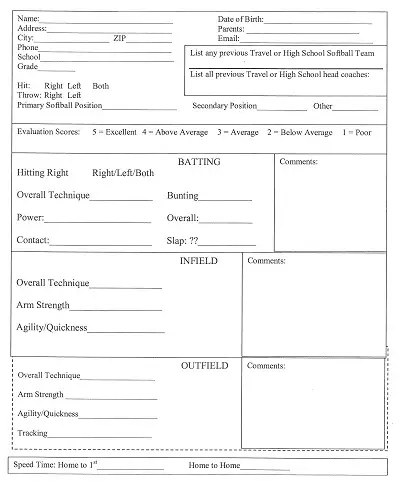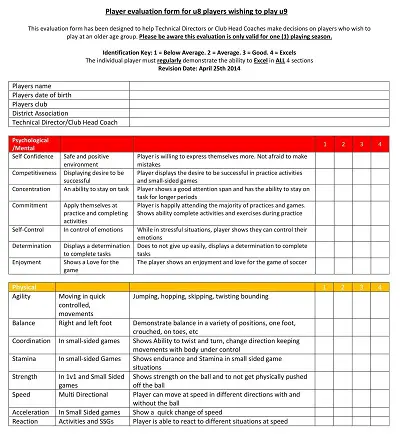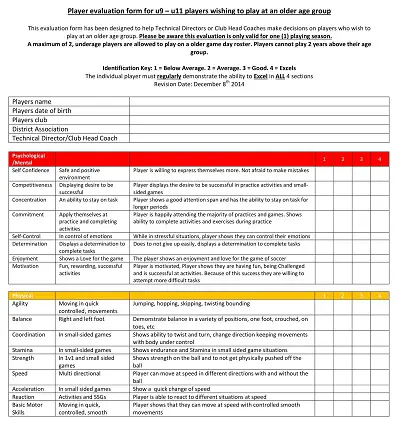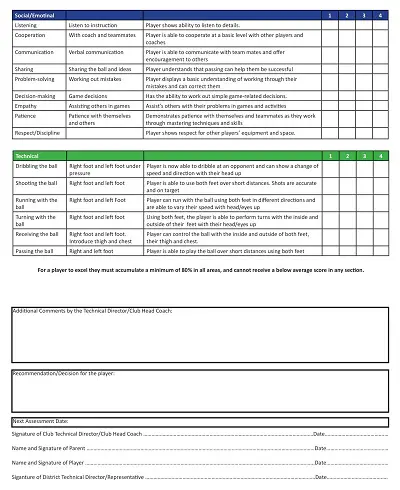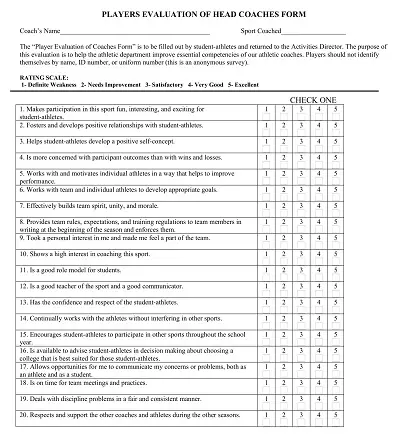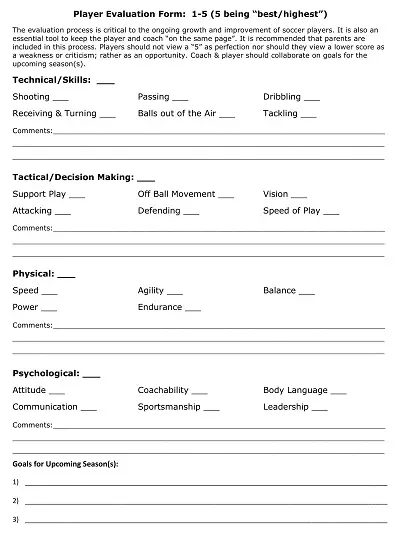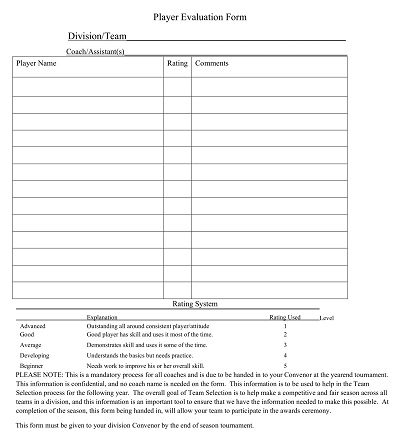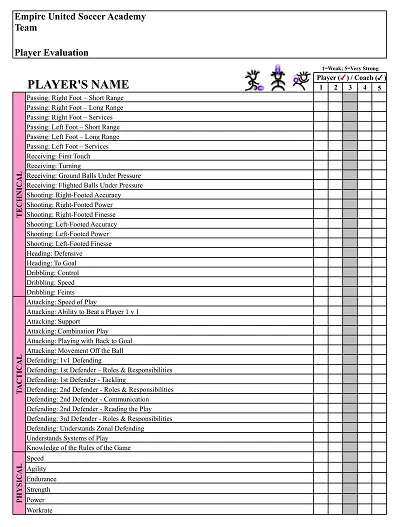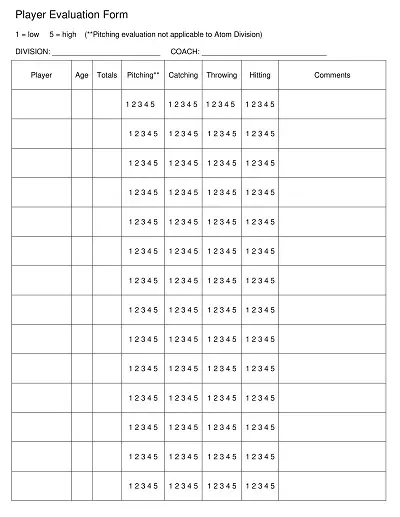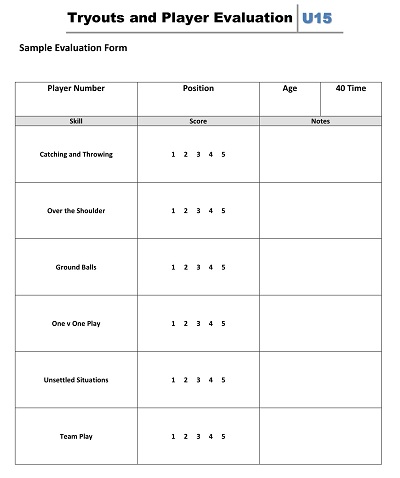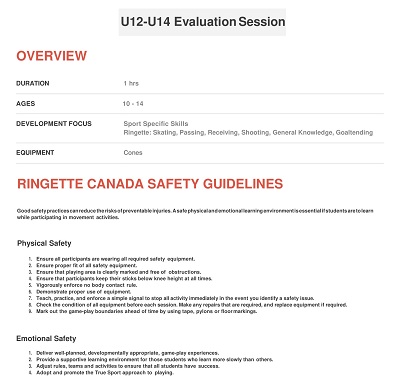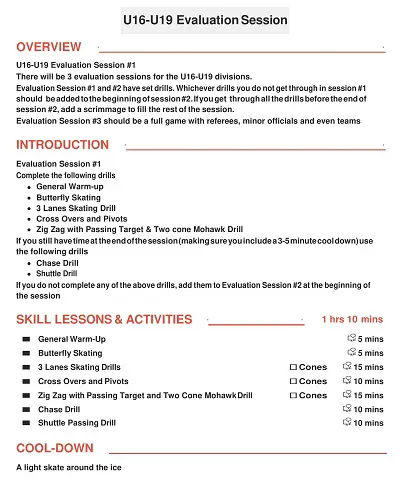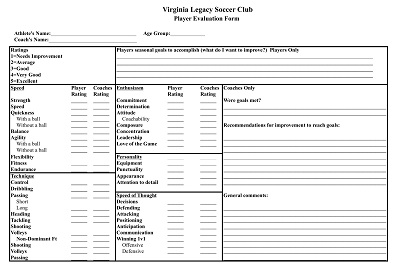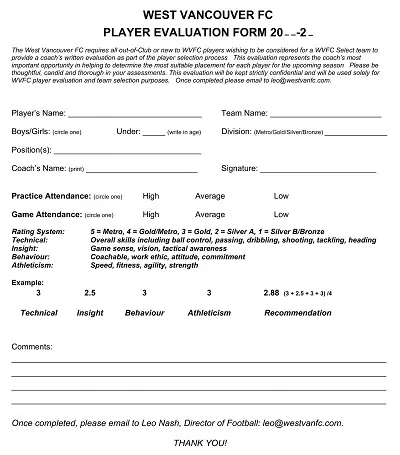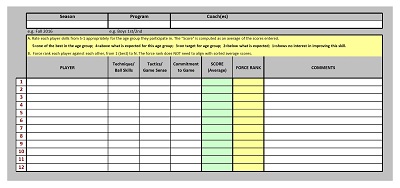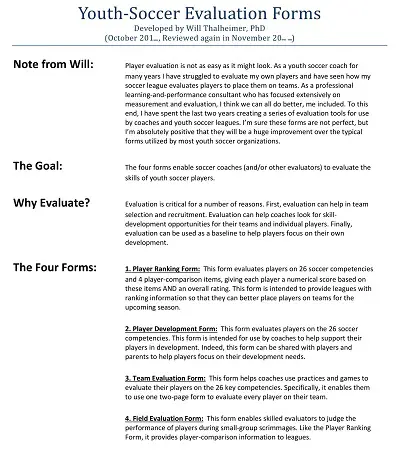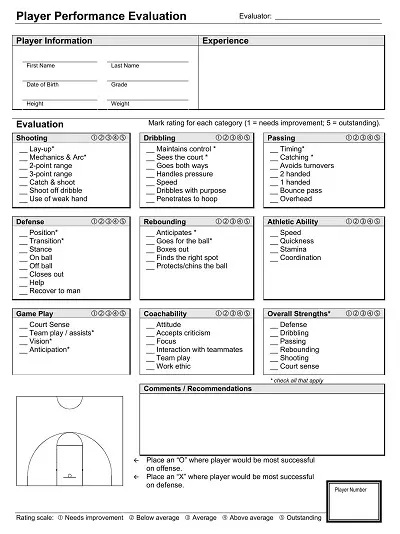44+ Free Printable Player Evaluation Form Templates (PDF, MS Excel)
Player evaluation forms are an essential tool for coaches, scouts, and other staff members when assessing an athlete’s performance. They provide a structured method of analyzing a player’s individual skills as they relate to the entire team, while also offering an opportunity to provide feedback and motivation. A player evaluation form template is a great resource for teams to use when summarizing a player’s strengths and growth areas.
Table of Contents
Typically, these forms include categories such as physical attributes, agility, offensive ability, defensive awareness, and mental toughness. By filling out the template regularly during practice or games, coaches are able to get a comprehensive view of each player’s abilities and how they fit into the overall team strategy.
Download Free Printable Player Evaluation Form Templates
Benefits of Using Player Evaluation Form
The use of player evaluation forms is useful in any sporting environment, as they allow coaches to track a player’s progress and performance over an extended period of time. This helps identify areas in which players are poor performers and also identifies those who may have the potential to be future stars. By collecting data from each game or practice, coaches can determine which tactics work best for their team.
These evaluations also provide a framework for setting goals and milestones for each player, helping them focus on improving their skills and reaching personal bests. Finally, evaluations can help create better-structured practices by demonstrating what works and what does not, leading to further growth in the overall level of play among the team’s members.
Importance of Player Evaluation
Player evaluation is essential in sports. It allows coaches to evaluate their players and target areas of improvement, helping them become better athletes. By assessing players’ strengths and weaknesses, teams can focus on what they need to do to improve their overall performance.
Evaluations allow coaches to understand the capabilities of each individual player and enable them to develop a roadmap for how best to use their talent. In addition, player evaluation can give insight as to which opponents players may have a strategic advantage against or where trades may be beneficial for the team. Ultimately, player evaluation plays an important role in helping teams achieve success.
Common Challenges in Player Evaluation
Evaluating players, particularly at the professional level, is no easy task. There is a multitude of factors to consider, from physical skills and talents to mental and emotional resources such as courage and resilience. Furthermore, things like team chemistry can be difficult to measure but are important pieces for any competitive athletic success. How athletes respond to stressful situations is also key but requires careful observation over time in order to get a clear picture of their performance potential and long-term development opportunities.
Evaluators must have an eye for detail, and the ability to read between the lines and look into nuance, while also having a broad grasp of the game they’re evaluating to better isolate relevant attributes. Breaking down each individual component can be incredibly difficult compiling an overall evaluation that captures systemic issues becomes even more challenging. The ever-fluctuating nature of sports further complicates matters as teams, staff dynamics, and rules evolve over time making it a real test of the evaluator’s skill.
Key Components of a Player Evaluation Form
A player evaluation form should include a variety of components in order to give an accurate assessment of each player’s performance. Here are some of the key components that should be included:
- Contact Information – This includes basic contact information such as name, address, phone number, email address, and any other relevant information. It also helps coaches track players over time.
- Player Evaluation – An overall rating scale is often used to evaluate players’ performances. This could include ratings such as “Excellent” or “Poor” but also more detailed ratings such as “Good” or “Needs Improvement”.
- Comment Section – This is an opportunity for coaches to provide additional detail about their assessments of players’ skills, techniques, and behaviors. Coaches can use this section to explain why they have given certain ratings and make suggestions for improvement where necessary.
- Goals & Objectives – One of the main objectives of a player evaluation form is to help athletes set goals for themselves and make improvements over time. To do this effectively, it is important that coaches specify individual goals and objectives that they would like each athlete to work towards achieving.
- Specific Skills & Techniques – Every sport has its own specific skills and techniques that need to be refined by each athlete in order for them to reach optimum performance levels. Coaches should take this into consideration when creating a player evaluation form by assessing particular skills such as shooting accuracy or passing accuracy during matches or practice sessions.
How to Create the Perfect Player Evaluation Form Template
Every coach knows the importance of evaluating players. Evaluation forms allow coaches to assess a player’s strengths and weaknesses in order to make decisions about their role on the team. But, creating an effective player evaluation form template can be a challenge.
Items Included in Your Player Evaluation Form
Creating an effective player evaluation form is no easy task, but it doesn’t have to be difficult either. First and foremost, you should determine what information will be most relevant to your evaluations. Consider including questions that focus on physical ability, attitude, behavior, performance, and skill development. Additionally, you may want to include questions about the team dynamics or game strategy. It all depends on what type of evaluation you are looking for and what information will best inform your decision-making process as a coach.
Make it Easy to Read
It is important that your player evaluation form is easy to read and understand so that coaches can quickly assess each player’s performance without being overwhelmed by too much information. To do this, use clear language throughout the form and organize questions into logical sections or categories based on the type of information being assessed (e.g., physical ability). This will help ensure that coaches can quickly locate relevant data points while they are filling out evaluations.
Organize Your Data Points
Once your player evaluation form has been created, you should start thinking about how you will organize all of the data points contained within it in order to better analyze your findings later on. For example, consider writing out separate sheets for each individual player with all of their data points listed in different columns or rows depending on what type of analysis you plan to do later (e.g., averages). This will make it easier for coaches to compare players across different criteria when making decisions about roles and playing time down the line.

